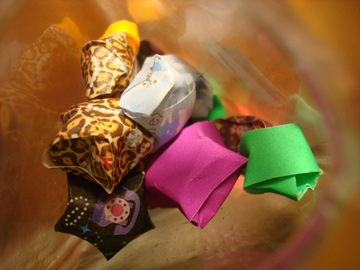![]()

Origami was practiced in ancient Japan during the sixth century after paper was introduced in Japan. "Ori" translates to folding, and "kami" translates to paper. Because paper was extremely rare, only the rich were able to practice origami. Origami had many purposes. Along with aesthetic purposes, origami was used in religious ceremonies and weddings. Samurai would exchange gifts wrapped in folded strips of paper that were thought to have good luck.
Modern origami was popularized in the 1950s by Akira Yoshizawa. The Yoshizawa-Randlett standard is used globally by origami enthusiasts. Modern origami is based off the design principles of traditional Japanese origami.
![]()
 An origami crane is as synonymous with Japan as the rising sun. Japanese folklore states that once a person folds 1000 paper cranes their heart's desire will come true. The true story of Sadako Sasaki has made the paper crane a symbol of peace as well. Sadako was a young girl afflicted with leukemia due to radiation from the atomic bomb dropped in Hiroshima. She started folding cranes with the wish to survive. She folded 644 before she died. After her death, friends and family helped to finish the 1000 cranes. Sadako was buried with all 1000.
An origami crane is as synonymous with Japan as the rising sun. Japanese folklore states that once a person folds 1000 paper cranes their heart's desire will come true. The true story of Sadako Sasaki has made the paper crane a symbol of peace as well. Sadako was a young girl afflicted with leukemia due to radiation from the atomic bomb dropped in Hiroshima. She started folding cranes with the wish to survive. She folded 644 before she died. After her death, friends and family helped to finish the 1000 cranes. Sadako was buried with all 1000.
A statue of Sadako with a giant paper crane is in Hiroshima Peace Park. Every year on Obon Day, a holiday to remember ancestors, thousands of people leave paper cranes near the statue. The plaque reads: "This is our cry. This is our prayer. Peace on Earth."
![]()
 Origami Club
Origami Club
The Origami Bible by Nick Robinson
Sadako and the 1000 Paper Cranes by Eleanor Coerr
The History of Origami by Hatori Koshiro
Origami Resource Center
